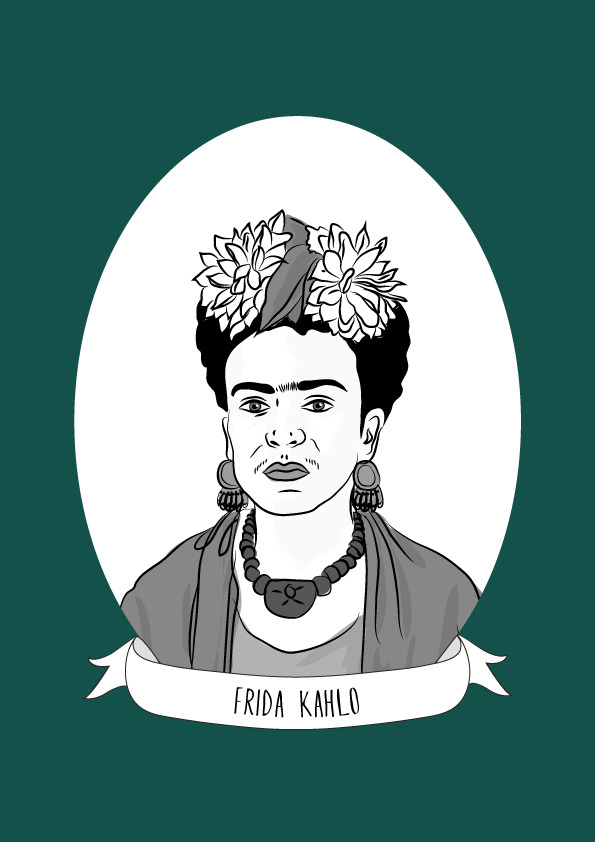Frida Kahlo was a Mexican painter and later a feminist icon. She is best known for her self-portraits.
Kahlo was three when the Mexican Revolution began in 1910 and witnessed violent armed struggles in the streets of Mexico City and frequent gunfire. Her mother would occasionally feed the revolutionaries. Kahlo contracted polio when she was 6, as a result she walked with a limp. Her father encouraged her to play football, wrestle and swim to aid her recovery. These activities were highly unusual for a girl at the time. Her illness inspired her to later enter a pre-med program in Mexico City, but she would never become a doctor.
Kahlo began painting after being seriously injured in an accident when the bus she was travelling in collided with a streetcar. She was impaled by a steel handrail and suffered fractures to her spine and pelvis among other injuries. She was put in a full body cast during her recovery and began to paint self-portraits in the three months she was immobile. She painted in a naive style filled with the colours and forms of Mexican folk art. She became more politically active and joined the Young Communist League and the Mexican Communist Party.
In 1928 Kahlo reconnected with Diego Rivera, a famed Mexican muralist who had painted a mural called The Creation at her school’s lecture hall. At the time, Kahlo had told her friends she would marry him and after a two year relationship, they did exactly that. Rivera encouraged her artwork and in 1930 Kahlo showed her painting Frieda and Diego Rivera at the Sixth Annual Exhibition of the San Francisco Society of Women Artists. Kahlo began to incorporate more graphic and surrealistic elements in her work while continuing to draw from her own personal experiences. her painting Henry Ford Hospital (1932) told the story of her second miscarriage and showed her naked in a hospital bed surrounded by a foetus, a snail, a flower, a pelvis and other objects connected to her by vein-like strings.
Kahlo and Rivera’s marriage was tumultuous and untraditional. They kept separate, adjoining homes and studies in San Angel and both carried out numerous extramarital affairs. Kahlo was openly bisexual and had affairs with both men and women. She was outraged when she discovered Rivera had an affair with her sister Cristina and cut off her long, dark hair in anger. The couple were active communists and together helped the exiled Soviet communist Leon Trotsky and his wife Natalia. They stayed at Kahlo’s home, known as the blue house as they had received asylum in Mexico. Kahlo and Trotsky are rumoured to have had an affair. In November 1939, Kahlo and Rivera were divorced but it was short lived as they remarried in December 1940, only to continue to live mostly apart.
In 1939 Andre Breton invited Kahlo to France, she was featured at an exhibition of her paintings in Paris and The Louve bought one of her paintings, The Frame which became the first work by a 20th century Mexican artist ever purchased by the internationally renowned museum. Kahlo created 143 paintings in her lifetime, 55 of which are self-portraits that often incorporated symbolic portrayals of physical and psychological wounds. She said that she often painted self portraits because “I am so often alone….because I am the subject I know best.”
Kahlo’s fame has only grown since her death in 1954, a year after she had finally received her first solo exhibition in Mexico. The Feminist movement of the 70’s led to renewed interest in her life and work, as Kahlo was viewed by many as an icon of female creativity. Her Blue House is now a museum and a pre-columbian urn stands there holding her ashes.
